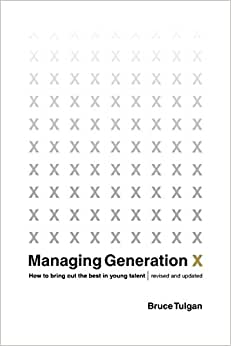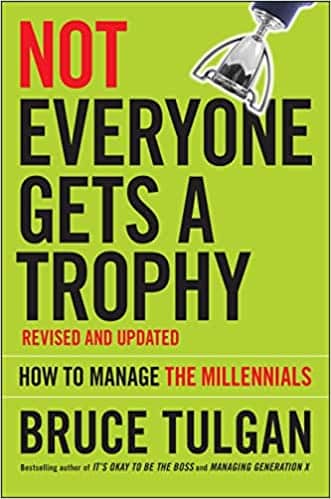Mention “Gen Z” to any preceding generations, and chances are you would come across a combination of the following connotations:
- Constantly on their phones and addicted to technology.
- Entitled and expect everything to be handed to them.
- Impatient and have a short attention span.
- Excessively politically correct and overly sensitive.
- Lacking social skills because they spend so much time online.
Over in the office, the older generations are feeling not just uneasy with them but even to the extent of being intimidated by them.
This is evidenced in the 2021 Multigenerational Workforce Study, a global study of more than 1,200 professionals, which found that 32 per cent of baby boomers (born between 1946 and 1964) and Gen X (born between 1965 and 1980) consider Gen Z to be the most challenging generation to work with. A further 18 per cent admitted to feeling intimidated by them.
Is this a fair assessment for Gen Z at large?
Before Gen Z, we had the Millenials (born between 1981 – 1996), Gen X (1965 – 1980) and the Baby Boomers (1946 – 1964).
Each of them carries its characteristics primarily shaped by the time they went through.
Arriving just after the end of World War II, Baby Boomers (or Boomers for short), born between 1946 – 1964) are known for their strong work ethics, respect for authority, loyalty and placing a high value on family.
That is the generation my parents belong to, in an environment where Singapore was just untethered from Malaysia and forced to grow up quickly. Survival and making sure the stomach doesn’t growl are vital priorities.
Following this is my generation, Gen X. Born between 1965 – 1980, we are more self-reliant, technologically savvy and adaptable. This is primarily shaped by growing up during significant social and economic change.
Personal computers and the internet arrived during then, which made us more tech-savvy. At the same time, many of us grew up in households where both parents work. That requires us to be more self-reliant and adaptable.
Just before Gen Z, millennials dominated the headlines. Born between 1981 – 1996, they grew up during relative peace and prosperity. They are the first generation to have grown up with widespread access to the internet and social media, making it easier for them to connect with others and become involved in causes that align with their ideals.
And finally, we have Gen Z. Born between 1997 to 2012. They would currently be between the age of 11 to 26, and they are already infecting entering the workforce.
Gen Z’s Quest for Job Joy
Across the different generations, each grew up in the situation and environment bestowed upon them. And it shaped them to be what they become. It is no different for Gen Z.
For 24-year-old Teo Jia Yi, she had front-row seats in witnessing the toil imposed onto her parents during the 1997 Asian Financial Crisis. Her father had to give up his dream of becoming an Architect to put food on the table. Her mother aspired to be an actress but became a Cabin Crew and subsequently a customer service officer instead.
The professional unfulfillment from her parents led the Account Manager with Singapore-based presentation agency HighSpark to focus on having that as her priority in a job.
Fulfilment means you are enjoying your work, even if that comes at the expense of a lesser salary. Like her friend who moved to Chiangmai to work in an animal sanctuary despite the low pay.
Turning 26 this year, Welson Kee also feels likewise. To this Brand and Communications Associate at mental wellness startup Intellect, finding joy in work is paramount since he spends many waking hours at work.
Shaking up the Workforce with Their Higher Education and Clever Approach to Career Goals
Their ability to reflect on history and learn from their parents’ missteps may be made possible by the cohort of a higher educated generation vis-a-vis preceding ones.
According to official stats, the number of new university graduates went from 7,248 (Gen X) graduates in 1993 to 19,818 (Gen Z) graduates in 2020.
This does not even account for non-local university graduates who aren’t factored into the statistics.
All these are despite the tuition fees of a four-year course that could set one back between $22,500 to $53,200. And that is if you qualify for citizens’ subsidies.
If families can afford 5-figures just for their children’s tertiary education, putting food on the table kind of problems are likely the least of their worries.
And that again rubs off Gen Z.
When your fundamental needs are fulfilled without lifting, you will naturally and instinctively scale up Maslow’s hierarchy of needs.
Developed by American psychologist Abraham Maslow in his 1943 paper “A Theory of Human Motivation” in the journal Psychological Review, the hierarchy of needs is a theory of psychology explaining human motivation based on the pursuit of different levels of needs.
The theory states that humans are motivated to fulfil their needs in a hierarchical order. This order begins with the most basic needs before moving on to more advanced needs. According to this theory, the ultimate goal is to reach the fifth level of the hierarchy: self-actualisation.
Food and safety are almost a given in Singapore’s context. Modern smaller families meant the concentration of parental love, and the past decade of participation trophies has stoked the ego in every kid, even if they don’t deserve it.
Self-actualisation refers to fulfilling one’s potential and becoming the best version of oneself. In the context of a job search, self-actualisation would involve identifying and prioritising job opportunities that align with one’s values, interests, and career goals.
It would also involve taking the necessary steps to develop the skills and qualifications needed for these jobs. Focusing on self-actualisation makes an individual more likely to find a fulfilling and satisfying career rather than just settling for a job that pays the bills.
Plus, money isn’t worth the same value anymore.
The 5Cs are Out, Fulfillment is In
Older generations like me may still remember the version of the Singapore dreams peddled to us as a mark of success in life.
Better known as the 5Cs, it is a colloquial term used to describe the key factors considered important for success in Singapore’s society and economy: cash, career, car, condominium, and credit card.
These five factors are often considered markers of success and financial stability in Singapore, and having them is seen as a sign that an individual is doing well in life.
Having “the 5Cs” means that an individual has a good amount of cash savings, a stable and well-paying job, a car, a condominium (a type of private housing), and a credit card. It is also seen as a status symbol, indicating a certain level of wealth, success and financial stability.
It was a relevant finishing line for the generation as the economy was proliferating, and there was an opportunity to leapfrog to the next level of success during that period.
When I bought my first car (a Hyundai Verna 1.6) in 2005, it cost $49,000, including COE. An equivalent model (the Hyundai Avanta 1.6) in 2023 would cost $137,999.
If that does not fess you, consider the private property market. The condominium I am staying at in Pasir Ris went for $600,000 if you bought them when they first TOP. Unfortunately, I am a second owner and paid twice that amount. At this time, units similar to mine are listed at $1.5mil.
That’s a 150% increase from its list price when it launched in 2016.
Contrast that to the starting salary of an NTU graduate in Sociology. According to the annual Graduate Employment Survey, it was $3,480 in 2016.
2021?
$3,567. A paltry 2.5% increase. A rounding error to the 150% change in my property price example.
This is likely why nobody is peddling the 5Cs anymore. And Gen Z is also not convicted to crazy hustle to afford them – it is so out of reach!
Even if they are affordable, the situation surrounding them reduces the value they provided during earlier years. When I was driving my Hyundai Verna in 2005, there were only 615k cars registered. Over 2022, there were 851k cars.
More cars, the same amount of land, and more jostling for parking lots. That is one reason why Jiayi has no intention to buy a car even though she has a driving license. It is far easier and cheaper to commute via private hire or car sharing.
History lessons further expounded on Gen Z’s viewpoint on this matter. Welson does not even have a credit card, even though he qualifies for it. The pursuit of 5Cs by his partner (Gen Y) and his older sister got them into debt. Able to observe these predicaments, he learned not to repeat the mistakes that other’s history has shown him.
Without the need to buy these expensive items to validate one’s self-worth, the focus shifted from extrinsic motivators to more values-driven ones, such as having good mental well-being, spending time with those who matter the most and being able to live carefreely and just going with the flow.
It does not sync well with what the previous generation are brought up to align with. This is likely why business owner Tjin Lee famously (or infamously) lamented on her IG over how hard it is to find motivated young people to work and that “Many Singaporeans in their 20s come for interviews asking about “work-life balance” and “flexible working options” as first questions.
And why even work for others when one can easily work for themselves?
How TikTok and Instagram are the Megaphones of a New Generation
Singapore has 5.3 million social media users out of a total population of 5.92 million, with the average Singaporeans spending 2 hours 31 minutes daily.
Platforms such as Instagram (founded by 41-year-old Kevin Systrom) and TikTok (founded by 37-year-old Zhang Yiming) are especially popular with Gen Zs.
While no definite figure is available for Tiktok demographics in Singapore, it’s likely to follow a similar trajectory as in the US, where 41% of users are aged 16-24.
Instagram also attracts the island’s younger audiences, with around 85% of the platform’s users aged 16-24.
And they became the mouthpiece and conduit for Gen Z to be heard (in this case, be seen). From activism to financial management to how they are going against the grain in what is expected of them, they are told in reels and videos that are often less than a minute each.
TikTok was where the term “quiet quitting” spread like wildfire after TikToker @zkchillin sent the term viral, describing it in a video posted in July 2022.
The video garnered 3.5 million views and almost 500,000 likes. The hashtag #quietquitting has been viewed 159 million times.
Combined with the algorithm to feed you more of what you desire, it becomes a never-ending loop that feasts on the curiosity of its audience and normalises what the previous generations may otherwise find taboo.
For instance, a piece of advice given to Welson from the prior generation is to keep a low profile. It brings to mind a Chinese idiom 树大招风 (Big tree catches wind) which means attracting bad attention if you put yourself out there.
Coupled with the activism streak in today’s youth, such platforms became the mouthpiece for Gen Zs to call out things that they cannot stand at work.
Such as @jamielyytiktok, who put up a TikTok about why she left TikTok (as an employee) after four months.
This phenomenon is also happening in China, where militant Gen Z call out bad practices at the company even when they are still working there!
Same same but different
If you turn to history, it is almost consistent that the preceding generations will point fingers at the younger ones and lament about them.
2013 Time Magazine’s cover story headline was “Millennials: The Me Me Me Generation”, alluding to their level of self-centeredness.
Or how the younger generations are entitled (The Atlanta Constitution on Gen X in 1997, Forbes on Gen Y in 2016), lazy (The Los Angeles Times 1996, Psychology Today 2016), refuse to grow up (New York Times 2001, Fox News op-ed 2016,), and require particular management strategy (American Management Association HRfocus magazine, 1999, Forbes 2016,)


A viral YouTube skit was also made by Official Comedy parodying how to manage Millennials in the Workplace.
The same Millennials who probably have their grouse with their succeeding generations.
If the older generations can temporarily put away the baggage accumulated with years, liabilities and commitments, we were just like Gen Z when we were their age.
The actions and decisions of previous generations have had a significant impact on the behaviour and attitudes of Gen Z. From the media platforms created by earlier generations to living in the world handed to them; it is evident that the experiences and choices of those who came before have shaped the world that Gen Z inhabits today.
As another history lesson, we can remember from this instance that any new actions today will also shape the world for future generations and to be mindful of the impact that we are having on the world around us.




